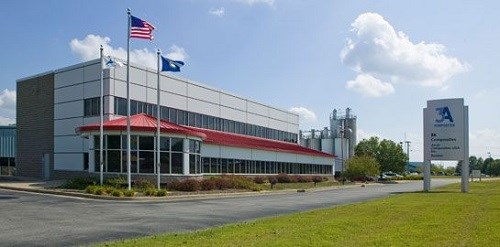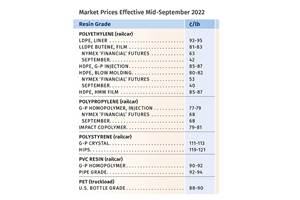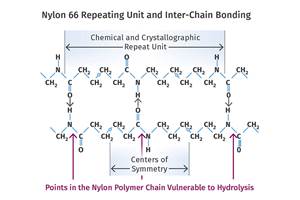Solvay Launches New Thermoplastic Lightweighting Materials for Aerospace
'Tegralite' is the name of a new family of thermoplastic composites developed by Solvay and three alliance partners.

They keep coming—advances in thermoplastic composites, and the degree of their success in ‘unseating’ traditional thermoset composites, metals and metal alloys in major markets such as aerospace and automotive appear to be very much linked to key industry partnerships.
Take Solvay Specialty Polymers, for instance, which late last month send out a press release on its launch of “Tegralite Thermoplastic Lightweighting Solutions to Improve Time and Cost Efficiencies in the Aeronautics Industry”, with three alliance partners. I quickly scrambled to find out what these “solutions” might be exactly because Solvay, in my humble view, is quite the company in terms of advanced materials’ innovation. I was nicely rewarded with clarifications to my questions, helped along by a hard-working account executive at a very reputable marketing communications firm. So, let me share:
Q: Are these foamed materials?
A: Tegralite is not a specific material but describes a new family of semi-finished thermoplastic lightweighting materials for aerospace applications that Solvay Specialty Polymers develops and commercializes together with its alliance partners—Aonix Advanced Materials, JSP, and 3A Composites, including foams, composites and sandwich materials manufactured out of Solvay’s extensive portfolio of polymers.
Product examples include Tegracore PPSU foam (formerly Radel foam) that have found use in the cabin of the new Airbus' A350 widebody jetliner and Stemme AG's new S12 motorglider, and thermoplastic sandwich materials made of Tegracore and sulfone-based prepregs manufactured by Aonix. Such sandwich materials have been used recently, for example, in a new generation of highly damage resistant and tolerant airline service trolleys.
To sum up: With Aonix, Solvay is propelling the development of innovative high- and ultra-performing prepreg systems as well as new sandwich materials and structures. Its partnership with JSP, pioneer of three-dimensionally molded expanded polypropylene (EPP) foamed parts, opens up fast and easy access to 3D foam parts, a technology already widely used in the automotive sector. And, its alliance with 3A Composites makes available for the first time and in large quantities a new generation of aerospace foams. This is all further complemented by Solvay’s range of functional and decorative films.
Q: Is this the first commercialization of new materials that utilize Aonix’s prepregs made of unique amorphous thermoplastics as we have reported previously?
A: Sandwich materials made of Tegracore PPSU and Aonix prepreg have been commercially introduced only lately. For example, in the June 2015 issue of Aerospace Manufacturing magazine, we describe this new generation of airline service trolleys that can best be described as “non-electric fridges on wheels”. The same technology concept can be applied to many other systems in the cabin because Tegracore PPSU resists Skydrol (Eastman Chemicals’ fire-resistant aviation hydraulic fluids). Also, Aonix’s prepregs have been finding additional uses beyond aerospace.
Q: Is this materials technology transferable to automotive, other transportation, and non-transportation applications?
A: A priori yes! That said, today our focus is to roll out our business in a very controlled manner…to not over-promise and under-deliver to our customers. Another thing to add is that rather than extrapolating our technology to automotive, we try to do the opposite: bring automotive technology to aerospace to overcome decades of long-supply-chain inefficiencies. As an example, we are working closely with JSP to advance their technology from EPP foamed parts to aerospace applications by establishing pathways to three-dimensionally molded PVDF foam parts. As aircraft OEMs and airlines strive to build more planes and create more part-commonality to improve operational effectiveness, this certainly is a very promising way to go.
Q: In this initial push, what “heavier plastics” (as noted in the press release) and which metals would the Tegralite materials replace?
A: We see a trend to replace big molded plastic parts by lighter composites. Also, we receive requests to replace aluminum structures. Details are confidential.
Q: Anything on cost that can be said--from upfront costs to processing, energy and/scrap savings?
A: Tegralite sandwich materials can win on multiple ends:
• Compared to incumbent honeycomb-based sandwich structures, they economize on labor costs for primary and secondary operations to make parts. The savings are greater the more complex parts are—such as S-shape panels vs. flat panels. This opens up new avenues in making mass-customized parts.
• The completely thermoplastic nature of these materials further opens up avenues related to on-board repair (e.g., on-board welding) in contrast to incumbent thermosets.
• In short, costs can be cut both in part making and in reducing costs of maintenance. Note that 3D molded PVDF foam parts allow for the production of integrated parts without scrap—i.e.; the fly-to-buy ratio is 1. In general, we assist our customers in cost studies and quantify the benefit of our materials.
Q: Anything else that can be said at this point about Tegralite materials?
A: Tegralite is a growing family of products that will be released step-by-step as they become market ready and application proven.
Want to find or compare materials data for different resins, grades, or suppliers? Check out Plastics Technology’s Plaspec Global materials database.



Related Content
Prices of Volume Resins Drop
Price relief is expected to continue through the fourth quarter for nine major commodity and engineering resins, driven by widespread supply/demand imbalances.
Read MoreWhat is the Allowable Moisture Content in Nylons? It Depends (Part 1)
A lot of the nylon that is processed is filled or reinforced, but the data sheets generally don’t account for this, making drying recommendations confusing. Here’s what you need to know.
Read MoreScaling Up Sustainable Solutions for Fiber Reinforced Composite Materials
Oak Ridge National Laboratory's Sustainable Manufacturing Technologies Group helps industrial partners tackle the sustainability challenges presented by fiber-reinforced composite materials.
Read MoreLanxess and DSM Engineering Materials Venture Launched as ‘Envalior’
This new global engineering materials contender combines Lanxess’ high-performance materials business with DSM’s engineering materials business.
Read MoreRead Next
Processor Turns to AI to Help Keep Machines Humming
At captive processor McConkey, a new generation of artificial intelligence models, highlighted by ChatGPT, is helping it wade through the shortage of skilled labor and keep its production lines churning out good parts.
Read MoreAdvanced Recycling: Beyond Pyrolysis
Consumer-product brand owners increasingly see advanced chemical recycling as a necessary complement to mechanical recycling if they are to meet ambitious goals for a circular economy in the next decade. Dozens of technology providers are developing new technologies to overcome the limitations of existing pyrolysis methods and to commercialize various alternative approaches to chemical recycling of plastics.
Read More







.png;maxWidth=300;quality=90)
















